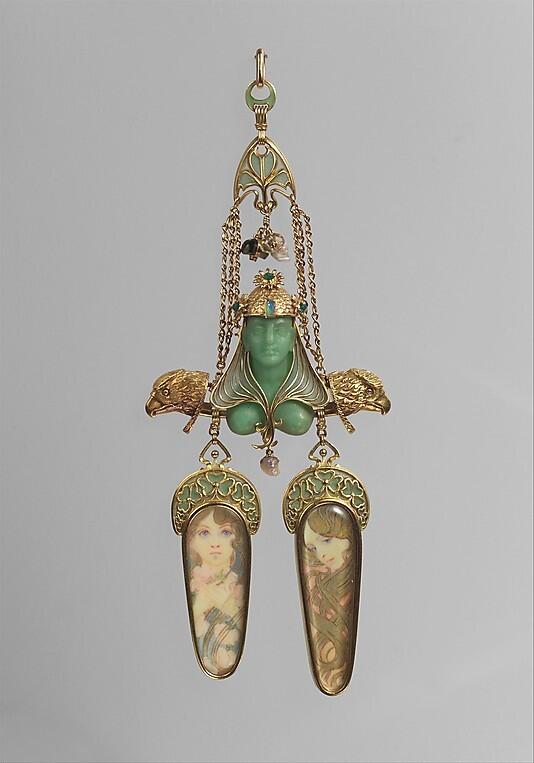By Charlie Hintz on December 15, 2010

Radium Girls at work in the US Radium factory in Orange, New Jersey
The
Radium Girls
were a group of female factory workers who contracted radiation
poisoning from painting watch dials with glow-in-the-dark paint at the
United States Radium
factory in Orange, New Jersey around 1917. The women, who had been told
the paint was harmless, ingested deadly amounts of radium by licking
their paintbrushes to sharpen them; some also painted their fingernails
with the glowing substance.
Five of the women challenged their employer in a court case that
established the right of individual workers who contract occupational
diseases to sue their employers.
From 1917 to 1926, U.S. Radium Corporation, originally called the
Radium Luminous Material Corporation,
was engaged in the extraction and purification of radium from carnotite
ore to produce luminous paints, which were marketed under the brand
name ‘
Undark‘. As a defense contractor, U.S. Radium was a major
supplier of radioluminescent watches to the military. Their plant in
New Jersey employed over a hundred workers, mainly women, to paint
radium-lit watch faces and instruments, believing it to be safe.
The U.S. Radium Corporation hired some 70 women to perform various
tasks including the handling of radium, while the owners and the
scientists familiar with the effects of radium carefully avoided any
exposure to it themselves; chemists at the plant used lead screens,
masks and tongs. US Radium had even distributed literature to the
medical community describing the “injurious effects” of radium. The
owners and scientists at US Radium, familiar with the real hazards of
radioactivity, naturally took extensive precautions to protect
themselves.
An estimated 4,000 workers were hired by corporations in the U.S. and
Canada to paint watch faces with radium. They mixed glue, water and
radium powder, and then used camel hair brushes to apply the glowing
paint onto dial numbers. The going rate, for painting 250 dials a day,
was about a penny and a half per dial. The brushes would lose shape
after a few strokes, so the U.S. Radium supervisors encouraged their
workers to point the brushes with their lips, or use their tongues to
keep them sharp. For fun, the Radium Girls painted their nails, teeth
and faces with the deadly paint produced at the factory. Many of the
workers became sick. It is unknown how many died from exposure to
radiation. The factory sites became Superfund cleanup sites.
Many of the women later began to suffer from anemia, bone fractures and necrosis of the jaw, a condition now known as
radium jaw.
It is thought that the x-ray machines used by the medical investigators
may have contributed to some of the sickened workers’ ill-health by
subjecting them to additional radiation. It turned out at least one of
the examinations was a ruse, part of a campaign of disinformation
started by the defense contractor. U.S. Radium and other watch-dial
companies rejected claims that the afflicted workers were suffering from
exposure to radium. For some time, doctors, dentists, and researchers
complied with requests from the companies not to release their data. At
the urging of the companies, worker deaths were attributed by medical
professionals to other causes; syphilis was often cited in attempts to
smear the reputations of the women. One of the workers,
Peg Loone, died from radiation poisoning at the age of 24.
The
story of the abuse perpetrated against the workers is distinguished
from most such cases by the fact that the ensuing litigation was covered
widely by the media. Plant worker
Grace Fryer decided
to sue, but it took two years for her to find a lawyer willing to take
on U.S. Radium. A total of five factory workers, dubbed the Radium
Girls, joined the suit. The litigation and media sensation surrounding
the case established legal precedents and triggered the enactment of
regulations governing labor safety standards, including a baseline of
‘provable suffering’.
The Radium Girls saga holds an important place in the history of both
the field of health physics and the labor rights movement. The right of
individual workers to sue for damages from corporations due to labor
abuse was established as a result of the Radium Girls case. In the wake
of the case, industrial safety standards were demonstrably enhanced for
many decades. Nonetheless, management and the US Government were again
guilty of lax standards in the handling of asbestos during WWII ship
building.
The case was settled in the fall of 1928, before the trial was
deliberated by the jury, and the settlement for each of the Radium Girls
was $10,000 (the equivalent of $127,589.47 in 2010 dollars) and a $600
per year annuity while they lived, and all medical and legal expenses
incurred would also be paid by the company.
The lawsuit and resulting publicity was a factor in the establishment
of occupational disease labor law. Radium dial painters were instructed
in proper safety precautions and provided with protective gear; in
particular, they no longer shaped paint brushes by lip, and avoided
ingesting or breathing the paint. Radium paint was still used in dials
as late as the 1960s, but there were no further injuries to dial
painters. This served to highlight that the injuries suffered by the
Radium Girls were completely preventable.
Robley D. Evans made the first measurements of exhaled radon and
radium excretion from a former dial painter in 1933. At MIT he gathered
dependable body content measurements from 27 dial painters. This
information was used in 1941 by the National Bureau of Standards to
establish the tolerance level for radium of 0.1 ?Ci (3.7 kBq).
The Center for Human Radiobiology was established at Argonne National
Laboratory in 1968. The primary purpose of the Center was providing
medical examinations for living dial painters. The project also focused
on collection of information, and, in some cases, tissue samples from
the radium dial painters. When the project ended in 1993, detailed
information of 2,403 cases had been collected. No symptoms were observed
in those dial painter cases with less than 1,000 times the natural
226Ra levels found in unexposed individuals, suggesting a threshold for
radium-induced malignancies.
Radioactive dials found wide use in military aircraft in World War II, and radium watches were manufactured into the 1950s.























 Abandoned doll factory in Spain
Abandoned doll factory in Spain 





